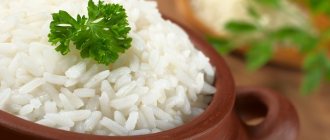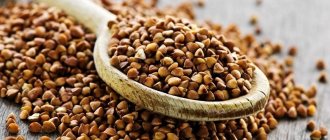Lentils are one of the oldest crops, cultivated by humans for at least 10 thousand years and mentioned in the Bible. In terms of vegetable protein content, this cereal is second only to soybeans and peas, which is why it is loved by athletes and vegetarians.
The benefits of lentils for the body include their high fiber content, as well as the presence of polyphenols (natural antioxidants), vitamins and minerals. Why do lentils come in different colors, do they taste different and how to cook them correctly?
History of lentils
Lentils have been used as a cooking product since time immemorial, forming the basis of nutrition for the civilizations of the Ancient World. In terms of its taste and nutritional qualities, lentils satisfied the needs of all segments of the population: it replaced both meat and bread for the poor, and exquisite delicacies for the nobility. In Rus', lentil dishes were incredibly popular, and flour products were baked from lentil flour.
Today, lentil dishes have begun to be replaced by other products, turning into an exotic item on our table. However, this crop continues to be grown in India, southern Europe, and also in North Africa.
Varieties
Lentils come in several varieties:
- brown is the most popular. In American cuisine, vegetable soups are prepared with herbs and this type of cereal. The brown variety of beans has a nutty flavor. Effective for lung diseases, various injuries and fractures;
- red - during the cooking process it quickly becomes soft as it lacks a shell;
- black, similar to beluga eggs;
- green French “puy” - grains of aromatic French lentils retain their integrity even after prolonged heat treatment. The Puy variety is used for making salads. Yellow beans are a green variety, only peeled from the shells.
Red lentils, benefits and harm
Eating red lentils will benefit you in the following cases:
- Red lentils contain a lot of iron, so they will be useful for anemia and anemia;
- Vitamin A makes hair and nails strong, the condition of the skin and teeth improves noticeably;
- Vitamin E prevents aging ;
- Dietary fiber functions as a regulator of metabolic processes, the body is filled with energy, the supply of which lasts for a long time.
A delicious soup is prepared from red lentils, you will learn the recipe in the video:
You may also be interested in learning about the benefits and harms of barley. These are crushed barley seeds, which during processing are cleared only of flower films, as a result of which almost all the vitamins, microelements and fiber contained in the grains are retained.
Green lentils, benefits and harms
Green cereal takes a long time to boil, so it needs to be soaked. Dishes made from this variety of lentil beans:
- have a therapeutic effect for constipation and diabetes due to their high fiber content;
- green beans lower bad cholesterol levels ;
- in combination with other drugs can improve the condition of rheumatism, liver and gastrointestinal diseases, hypertension , etc.;
- Unripe green lentils are richest in tryptophan, which triggers the production of serotonin in the body.
The amaranth plant will also help produce serotonin. A true treasure trove of unique flavors and powerful healing properties, anyone can benefit from knowing how to consume amaranth seeds.
Dishes based on this product are not recommended for use in case of digestive problems, the body’s tendency to form gas, or joint diseases.
Which lentils are healthier, red or green? Each variety has a whole range of important substances and compounds, but the best in all respects is the green variety of lentil beans.
Green lentils are the healthiest
Benefits of lentils
Lentils are the leader in vegetable protein content, which is easily absorbed by the body. In terms of its nutritional qualities, the protein present in lentils is in no way inferior to the protein that is part of meat - in addition, it is completely devoid of its disadvantages.
The benefits of lentils are determined by the content of many essential amino acids, for example, lecithin - a substance necessary for the full functioning of the nervous system, the activity of brain cells, the construction of liver cells, and many other functions.
Lentils are rich in such important substances for the human body as soluble fiber, calcium, phosphorus, iron, potassium, iodine, zinc, cobalt, magnesium, boron, etc. In addition, the benefits of lentils lie in the presence of Omega-3 and Omega-6 fatty acids, positively affecting the functioning of the cardiovascular system.
Since ancient times, based on lentil grains, a drink called “Arabian strengthening” has been made, which is considered a panacea for any disease. Due to the presence of isoflavones in lentils - unique substances that are not afraid of heat treatment - regular consumption of the product prevents the occurrence of such a dangerous disease as breast cancer.
It is difficult to find a product with such a high iron content as lentils, the properties of which are truly impressive. Eating dishes based on culture - soups, stews, cereals, salads will help prevent diseases of the hematopoietic system and digestive tract (ulcers, colitis). Introducing lentils into the daily diet of diabetic patients can naturally normalize blood sugar levels. Sprouted lentil seeds are the leader in vitamin C content.
A very valuable property of lentils is that the plant is not able to accumulate harmful substances (nitrates, radionuclides), due to which it is considered one of the most environmentally friendly crops around the globe.
Lentils and vitamin K
If you don't just focus on how much protein there is in lentils, but rather get acquainted with all its benefits, which are difficult to overestimate, then it will be interesting to learn about the connection between lentils and vitamin K - a nutrient that is important for blood clotting, bone health and cell growth. Any vitamin K deficiency is not common because this nutrient is readily found in so many different foods. Lentils, a legume, offer 3.4 mcg of vitamin K per 125-gram cooked serving.
Choice
Lentils can be purchased dried or canned. Supermarkets sell lentils, but a market or health food store may have a larger selection. Dried lentils are sold in pre-packaged bags or in bulk bins. Once purchased, dried lentils will keep indefinitely in an airtight container as long as they are placed in a cool, dry place. Canned lentils are more convenient because they don't require any cooking before eating, but they contain more sodium than their dried counterparts.
Unlike dried beans, which need to be soaked before cooking, lentils can be cooked immediately. This makes it a convenient option for kitchen storage. With their subtle flavor and texture, they add interest to a variety of dishes. Use red or brown lentils to replace or expand on ground beef in recipes. Add lentils to soups or stews as a “thickener.” Toss French green lentils with seasonal vegetables and vinaigrette for garnish; Cooked lentil puree can be used as an alternative to hummus.
Calorie content of lentils
The calorie content of lentils is 119 kcal/100 grams of product. The nutritional value of lentils is:
- Proteins - 9.0 g;
- Fats - 0.6 g;
- Carbohydrates - 22.1 g.
The glycemic index of lentils is 30. Due to the low calorie content of lentils, as well as the presence of complex carbohydrates in its composition (the dietary properties of lentils), the product can be included in a weight loss program for overweight people.
What's in lentils?
The content of essential acids is high: isoleucine – 55.5% and valine – 51.6%. The high concentration of micro- and macroelements allows the plant to be used for the prevention of many diseases.
- Phosphorus – 44.4%;
- Iron – 39.1%;
- Zinc – 32.7%;
- Potassium – 32.5%;
- Magnesium – 24.9%;
- Selenium – 12.8%.
Lentils contain phytosterols, carbohydrates, fiber, pectin, starch and maltose.
Given its unique composition, legumes must be added to the diet if there is a lack of vitamins and microelements in the body.
Lentils for weight loss
Lentils are a very healthy and satisfying dish that is an integral component of many diets. There are two options for using lentils for weight loss:
- Strict diet. During the day, only lentil porridge, cooked without salt and oil, is eaten. During the day you need to drink more water; at night you can drink a glass of kefir. It is not recommended to follow this diet for more than 3-5 days.
- Less strict diet. With this option, it is possible to prepare more delicious dishes from lentils, with the addition of oil, vegetables, and fruits. Between meals you can drink water, tomato juice, green tea and kefir.
Within 1 week of the lentil diet you can lose 2-4 kg.
Losing weight with lentils from celebrities
Every day the weight loss system of the famous fitness trainer Igor Obukhovsky is becoming increasingly popular. His clients achieve amazing weight loss results. But, as the coach admitted, not only sports is the key to slimness. He developed his own nutrition system, which is successfully used by many well-known personalities. The success of his program is so high that he regularly appears on television weight loss shows.
He himself claims that he has always been a supporter of healthy eating and recommends that parents instill these principles in their children from childhood. After all, physical activity and a healthy, properly formed diet are the main keys to a toned figure and the absence of complexes against this background.
Igor Obukhovsky shared one of his favorite dishes, which form the basis of his diet and allow him to maintain his body in perfect shape. Surprisingly, this dish turned out to be lentils. At the same time, it is prepared with mushrooms, carrots and onions. The dish turns out aromatic, tasty and healthy, and takes minimal time to prepare.
The trainer advises everyone to include these beans in their diet, as they not only bring great benefits to the body, but are also highly effective in the fight against excess weight.
Potential harm of lentils to human health
Lentils contain antinutrients (antinutrients) that can interfere with the absorption of other nutrients.
Trypsin inhibitors
Lentils contain trypsin inhibitors, which block the production of an enzyme that normally helps break down protein in food.
However, lentils typically contain small amounts of these substances, and trypsin from lentils is unlikely to have much effect on protein digestion ().
Lectins
Lectins can interfere with digestion and bind to other nutrients, preventing their absorption.
In addition, lectins can bind to carbohydrates on the intestinal wall. If they are consumed in excess, they can disrupt the intestinal barrier and increase intestinal permeability - a condition also known as leaky gut syndrome ().
It has been suggested that too many lectins in the diet may increase the risk of developing autoimmune diseases, but the evidence to support this is limited ().
Moreover, lectins may have antitumor and antibacterial properties (,).
If you're trying to minimize lectins in your diet, try soaking your lentils overnight and discarding that water before cooking.
Tannins
Lentils contain tannins, which can bind to proteins. This may interfere with the absorption of certain nutrients ().
In particular, there are concerns that tannins may interfere with iron absorption. However, research shows that iron levels are generally not affected by the consumption of dietary tannins ().
On the other hand, tannins are high in antioxidants that promote health ().
Phytic acid
Phytic acids or phytates can bind minerals such as iron, zinc and calcium, reducing their absorption ().
However, phytic acid has been reported to have strong antioxidant and anticancer properties ().
Although lentils, like all legumes, contain some antinutrients, it is important to note that removing the outer layer and cooking the seeds significantly reduces the presence of these antinutrients ().
Summary:
Lentils contain antinutrients such as trypsin inhibitors and phytic acid, which reduce the absorption of certain nutrients. Soaking and cooking lentils will minimize them, but regardless, you'll still absorb most of the nutrients.
Norm for use
Doctors recommend following the following norm for lentil consumption: no more than 300 g per day. Eating it every day is also not
needed - 2-3 servings per week is enough. Below is the chemical composition of sprouted lentils:
- 22 g complex carbohydrates;
- 9 g protein;
- 0.5 g fat.
For better absorption of the sprouted plant, you can add fresh herbs, garlic, onions and tomatoes. Sprouts also contain a large amount of essential amino acids. For example, tryptophan, which normalizes sleep and improves mood, as well as lysine, which helps absorb calcium and transport it to the bone skeleton.
Sprouted healthy lentils are rich in thiamine, which promotes the absorption of carbohydrates and improves glucose production. In addition, this legume contains methionine, which relieves muscle pain, eliminates inflammation, helps cope with depression and relieves muscle pain.
Summarize
- Brown, green, yellow, red or black lentils are low in calories, rich in iron and folate, and an excellent source of protein.
- They are rich in health-promoting polyphenols that may reduce risk factors for cardiovascular disease.
- Lentils are easy to prepare—cooking in just 5-20 minutes—and, like soaking, reduces antinutrient content.
The article was prepared by experts for informational purposes only. It should not be used as a guide for treating medical conditions and is not a substitute for professional medical advice, diagnosis, or treatment. In case of illness or any symptoms, you should always consult a doctor and not self-medicate.
Tags: Lentils
About the author: Alexander Fedorov
Candidate of Biological Sciences, biologist, nutrition expert. Graduated from Stavropol State University with a degree in Biology at the Faculty of Biology and Chemistry.
- Related Posts
- What are the benefits of coconut for the human body?
- Which nut is healthier - almonds or walnuts?
- Should men eat peanuts?
« Previous entry
Contraindications for use
Lentils are legumes, which is why they promote increased gas production in the intestines. This product is not recommended for people who suffer from pathologies of the digestive organs. Dysbacteriosis is also a contraindication.
It is recommended to limit lentil consumption if there are pathologies of the gallbladder and kidneys.
Restrictions include gout, joint damage, and uric acid diathesis. The product leads to the production of purines. Therefore, it is not recommended for use for arthritis.
Calorie content, energy and nutritional value of different types of lentils boiled in water
There are five varieties of this product. We provide data on the calorie content of 100 grams of each type of boiled lentils.
Red
Calorie content of boiled red lentils is 292.65 kcal. If converted to joules, this is 1225 kJ. The glycemic index of the product is 30. The protein content of red lentil beans boiled in water is 21.02 g, which is 31% of the recommended daily value. The amount of fat is 1.10 g (1%), carbohydrates – 47.39 g (17%).
Yellow
Like green boiled lentils, the calorie content of yellow beans is the lowest - 272 kcal. When converted to joules, this is 1138 kJ. The boiled glycemic index is 30. 100 g of the product contains 23 g of protein (34% of the daily value), 1.30 g of fat (1%), 43.40 g of carbohydrates (16%).
Green
The calorie content of green lentils boiled in water is 282.47 kcal. In joules this would be 1182 kJ. Glycemic index – 25. Quantitative values of BJU and their percentage ratio to the daily value: protein content – 23.09 g (34%), fat – 1.35 g (1%), carbohydrates – 47.16 g (17%).
Brown
The nutritional value of this variety of lentils boiled in water is 303.75 kcal. When converted to joules, it is equal to 1271 kJ. The quantitative and percentage content of BJU is as follows: 24.25 g of protein (36% of the norm), 1.38 g of fat (1%), 48.23 g of carbohydrates (18%).
Important: Due to their low glycemic index and low fat content, lentil beans can be safely consumed if you have diabetes.
Black
The energy value of this type of boiled lentil is 337 kcal. In joules, its calorie content will be equal to 1410 kJ. Glycemic index – 25. Per 100 grams of product there are 23.20 g of protein (34% of the daily value), 1.20 g of fat (1%), 58.40 g of carbohydrates (16%).











